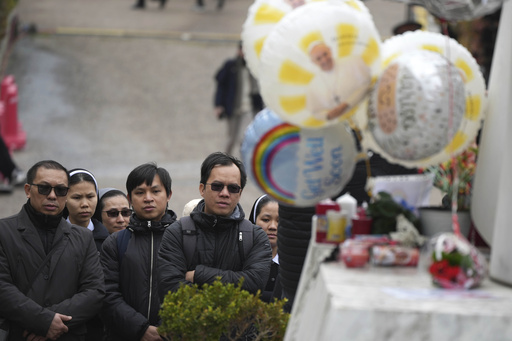ROME — Pope Francis demonstrated resilience by conducting important Vatican business from his hospital bed, where he is being treated for severe pneumonia. On Tuesday, the Vatican confirmed that the Pope met with top church officials to approve new sainthood decrees, suggesting that despite his critical condition, vital decisions for the Church are still being undertaken.
The audience conducted on Monday indicated that Pope Francis remains actively involved in Vatican affairs. This meeting signaled the continuation of operations within the Vatican, even following doctor recommendations about the cautious prognosis for the 88-year-old pontiff. During the significant session, the Pope conferred with Cardinal Pietro Parolin and Archbishop Edgar Peña Parra, marking the first such meeting since his hospitalization in February.
In this audience, the Pope confirmed decrees for two new saints and earmarked five individuals for beatification, setting the path to potential sainthood. Furthermore, Pope Francis decided to call a consistory, a cardinal meeting necessary for canonization discussions, reflecting a forward-thinking approach despite his health struggles. The date for this consistory remains undecided, but it follows a legacy where similar announcements carried significant papal implications, as evidenced by Pope Benedict XVI’s resignation declaration during a similar consistory in 2013.
Reports have emerged pondering whether Pope Francis, following the precedent set by Benedict XVI, might resign if his health severely obscures his duties. However, such speculation remains opinions rather than forecasts. Some maintain confidence in his leadership continuity, emphasizing his critical role to the global community and church well-being.
Biographical insights reveal Pope Francis’ open considerations regarding resignation. He has expressed intentions of residing in Rome as “emeritus bishop” instead of “emeritus pope” if he ever chooses to step down. Although speculation persists, these considerations suggest careful preparation over impulsive decisions. His hospitalization has scrutinized this possibility among Vatican scholars, yet officials, including Cardinal Parolin, dismissed resignation talks, prioritizing recovery discussions.
The Vatican maintained active communication through official messages, pointing to a productive period despite the Pope’s ailments. Francis’ dedication was demonstrated by releasing a Lenten message and appointing new bishops across several regions, reflecting leadership continuity. This productive phase likely results from meticulous planning, as many decisions events progressed over time.
Daily updates have offered a glimpse into the Pope’s recovery. Earlier updates revealed his grave state due to pneumonia, but recent reports convey areas of improvement, including reduced respiratory support requirements. While medical experts highlight the precariousness of his health—considering his age and past lung complications—the current trajectory intimates cautious optimism.
Supporters and religious adherents globally and locally have conveyed solidarity. Cardinal Óscar Rodríguez Maradiaga articulated hope, underscoring urgent communal prayers for Pope Francis’ recuperation. Local and international well-wishers have shown concern using spiritual engagements, highlighting the Pope’s indispensable spiritual leadership.
In the vicinity of Gemelli hospital, spiritual allegiance remained prevalent despite the weather. Visitors from various parts of the world, like Canadian visitor Hoang Phuc Nguyen, embodied the widespread devotional support, demonstrating the shared responsibility among the faithful for their spiritual leader’s health. “He is our father, and it is our responsibility to pray for him,” Nguyen shared, encapsulating the universal devotional sentiment for Pope Francis’ health.




